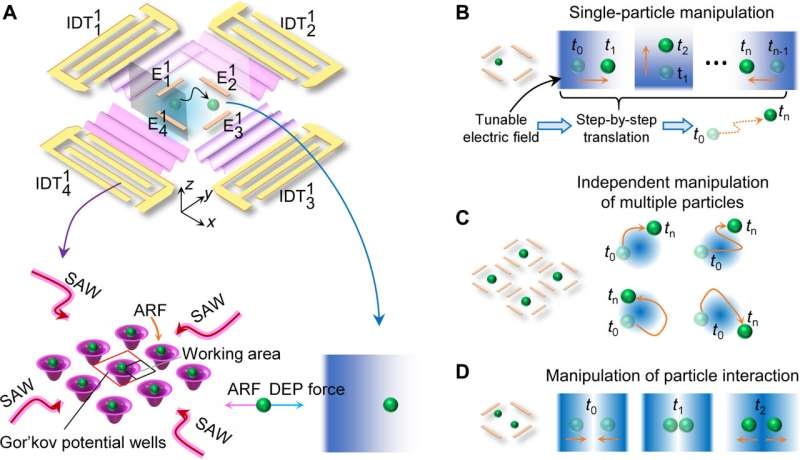Scientists at Virginia Tech have developed a groundbreaking tool that allows them to manipulate cells without physically touching them, opening up new possibilities for studying the behavior of harmful pathogens like the COVID-19 virus.

Acoustic And Electric Forces
The secret to this groundbreaking method is the synergy of two energies: acoustic waves and electrical fields.
Now, researchers under assistant professor Zhenhua Tian have created a microdevice that can noninvasively grasp and manipulate tiny particles by harnessing those methods.
These acoustic waves hail from outside the realm of human hearing and create a grid pattern made up of “acoustic wells” on the surface of the device. The wells provide a mechanism to ensnare the microparticles, which are trapped along the sides of the well without having to manipulate them by physical contact.
At this point, the researchers bring out very small electrodes that create electrical fields to steer the trapped particles. Using the acoustic wells in conjunction with their electrical fields, the researchers are able to manipulate particles and position them within the wells for further study of these fragile samples.
Transforming Disease Research and More Info
This contactless approach is a game-changer for researchers studying disease progression, be it cancer or viruses, including COVID-19. Commercial versions of these toxic pathogens, use physical methods to handle them, most of the time while working on this samples they are destroyed or damaged. With the new acoustic-electric device, scientists are able to watch viruses and other fragile samples for longer periods of time as they actually work in order to get a better understanding on how they behave and interact.
The researchers then work on making new technologies that have potential implications for studying cell-cell interactions, white blood cells interacting with cancer cells being one example. Research so far has revealed that by soft manipulation of these cells — without directly touching them — scientists can begin to understand how they interact and consequently influence cancer detection, understanding, diagnostics and even how care is given.
The potential applications of this technology are wide-ranging beyond the medical field. This could be especially valuable for applications requiring the control and manipulation of small particles, such as in microfluidics, robotics, or even nanotechnology.
Conclusion
This work marks new leaps in microscale manipulation and it is reportedly the first of its kind developed by a research team from Virginia Tech. They have orchestrated a spectacle that might allow us to see the behavior of pathogens, cells and other super small stuff in ways never seen before, unionizing acoustic waves with electrical fields. Such a milestone discovery can transform the way diseases are studied and open new avenues in diagnosis, treatment and prevention of numerous diseases. Although we are far from discovering the full potential of this highly promising technique, the future of contactless cell manipulation seems more shining by each passing day in hands-on work from the scientific community.
